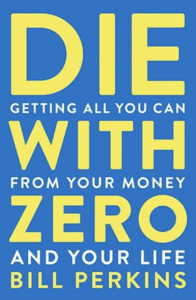The XEU ETF provides exposure to a broadly diversified portfolio of European stocks. It replicates the performance of the MSCI Europe Investable Market Index, net of expenses.
The ETF tracks more than 1,300 companies. The Index covers ~99% of the free float-adjusted market capitalization of the European Markets.
XEU’s current principal investment strategy is the Sampling Strategy.
Pros of iShares XEU ETF
- It seeks to provide long-term capital growth.
- It provides exposure to a broad range of large, mid, and small-cap equities from 15 developed markets in Europe.
- It provides international diversification.
Cons of iShares XEU ETF
- Diversification limited only to Europe.
- It is a relatively smaller ETF with assets worth just CAD $300M.
- Expensive with MER of 0.28% when compared to VGK ETF.
- XEU is not hedged to CAD.
iShares XEU ETF Facts
- Inception Date: April 15, 2014
- Benchmark: MSCI Europe Investable Market Index
- Net Assets: $301M
- MER: 0.28%
- 12 Month Trailing Yield: 1.90%
- Distribution Yield: 1.72%
- Dividend Schedule: Semi-annual
iShares XEU MER – Management Expense Ratio
XEU’s management fee stands at 0.25% and MER is 0.28%. Your other options are BMO’s ZEQ ETF and Vanguard’s VGK ETF with an MER of 0.45% and 0.08% respectively.
The MER is what Blackrock takes to manage the fund for you. It’s much cheaper than mutual funds and in some cases cheaper than investing on your own.
Mutual funds can charge over 2% and it robs you of your returns. It’s time to ditch your mutual funds and switch to ETF ASAP. Many brokers such as Questrade offer free ETFs.
iShares XEU Performance
The annual rate of return for iShares XEU ETF since inception is 7.02%. It has underperformed the broader S&P 500 index.
Why take the risk on Europe then …

The annual rate of return for iShares XEU ETF since inception is 7.02%. When you compare with my annual ROR of 14.40%, there is a big difference. Just look at the S&P500 index to get a different perspective.
Take your TFSA account as an example. The rules are the same for everyone and I mean everyone. The growth is ultimately a factor of your investment performance provided you make your TFSA contribution limit every year. The annual performance of an ETF matters as you can see below the growth over 20+ years.
iShares XEU ETF Holdings
XEU ETF is a good way of investing in the top European companies.
Nestle is its most significant holding with 2.6% weightage, followed by ASML Holding with a ~2% allocation. Roche Holding is its third-largest holding, accounting for 1.8% of iShares XEU’s fund allocation.
XEU’s allocation is not heavily weighted on its top 10 holdings. The top 10 holdings also include Europe’s leading pharma companies like Roche Holding, Novartis, and AstraZeneca and consumer-focused companies like Nestle, Unilever, and LVMH making it a necessity-based portfolio.
European stocks like Nestle SA and SAP constitute some of the world’s biggest and best-known companies.
iShares XEU ETF Sector Allocation
The ETF is inclined towards the Financials sector with ~17% of asset allocation towards this sector. Overall, 65% of the ETF is exposure to financials, industrials, healthcare, consumer discretionary and staples.
However, these allocations may change from time to time. Energy ranks low on this fund’s allocation list as compared to other popular Canadian ETFs like XDV, XIU, XIC, etc., while healthcare, consumer discretionary and consumer staples rank high on the list.
| wdt_ID | Sector | Ratio |
|---|---|---|
| 1 | Financials | 16.41 |
| 2 | Utilities | 4.03 |
| 3 | Communication Services | 4.03 |
| 4 | Consumer Cyclical | 12.09 |
| 5 | Energy | 4.05 |
| 6 | Basic Materials | 7.73 |
| 7 | ||
| 8 | Industrials | 15.90 |
| 9 | Consumer Defensive | 11.56 |
| 10 | Real Estate | 2.53 |
| 11 | Cash | 0.57 |
| 12 | Technology | 8.09 |
| 13 | Healthcare | 13.00 |
Why hold iShares XEU ETF
XEU, when you look at the sectors, tends to cover the opposite of what Canadian ETFs cover.
If you like XIU, XEU is possibly an interesting option to maintain a similar performance but to expose your money to a different type of businesses and a much larger economy.

If you want the dividends, it’s not clear you will get the same growth but the the best banks and the best utility stocks will give you more income.

